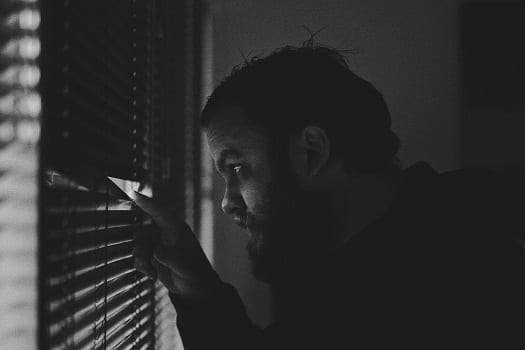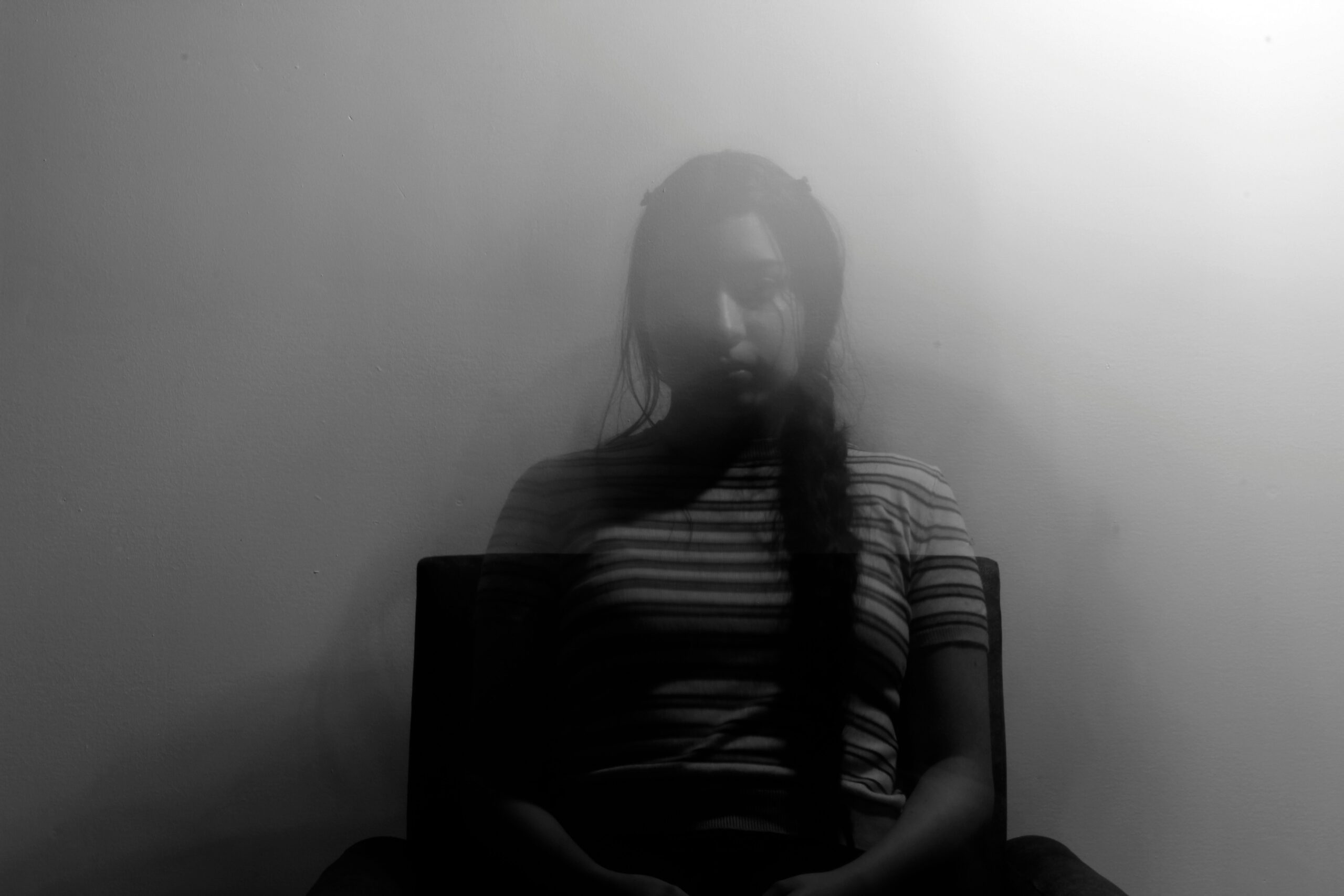Going outside can be scary for all of us. Weather, traffic and other factors can make staying inside seem like a great option on most days. Many people, however, suffer from a condition called agoraphobia, which makes leaving the house nearly impossible. Agoraphobia is caused by the fear of people, crowds, open spaces and other things that exist outside the house. Ultimately, the condition results in a fear of leaving home entirely. Millions of Americans suffer from agoraphobia. It has a profound effect on the well-being of many people. A lot of us feel anxiety in social situations. We’re afraid of large crowds and enclosed spaces. We know that the world can be a dangerous place. However, those who struggle with agoraphobia find themselves unable to leave their homes or live normal lives. In turn, many find that their relationships, careers are negatively impacted by the disorder. In some cases, sufferers will rely on other people to perform basic tasks. Grocery shopping and other basic tasks become extremely difficult. Fortunately, there are ways to treat it. Exposure therapy, for example, helps 75% of people with symptoms overcome agoraphobia each year. In order to treat agoraphobia, it helps to first understand what it is, what causes it and what the symptoms are.
What is Agoraphobia?
The DSM-5 defines agoraphobia as a significant fear of two or more of the following situations:
- Using public transportation
- Being in open spaces
- Being in enclosed spaces
- Standing in line or being in a crowd
- Being outside of the home alone
In some instances, people struggling with agoraphobia are also diagnosed with panic disorder. However, this is not always the case. Sometimes, agoraphobia stems from panic disorder itself. Those who fear crowds, lines and enclosed spaces might be afraid of having a panic attack in public. That fear causes them to avoid situations where they can’t escape. In other cases, however, agoraphobia stems from a fear of people. As with social anxiety disorder in general, those who fear judgement and embarrassment usually steer clear of potentially uncomfortable social situations. Ultimately, agoraphobia seems to stem from a desire to remain comfortable. If we can anticipate that a situation might occur, we can decide to avoid it. By not leaving our homes, we’re able to maintain control over ourselves and our surroundings.
Symptoms of Agoraphobia
It’s common for people to have a fear of large crowds and enclosed spaces. Plenty of folks get uncomfortable standing at a concert or driving through a tunnel. In order to function within modern day society, however, we acclimate ourselves to conditions that are awkward and uneasy. People who struggle with agoraphobia find themselves unable to overcome their fear of crowds, open spaces and small places. They are struck with fear nearly every time they are exposed to such situations. In response to their fear, these folks create a physical and mental barrier for themselves. The edges of their house, property or neighborhood becomes a threshold that can’t be passed. They feel extreme anxiety about crossing the boundaries they’ve established for themselves. As a result, agoraphobic people will typically show the following symptoms:
- Avoidance of situations that may trigger fear
- Extreme distress in such situations
- Fear of leaving home alone
- Fear of being alone
- Inability to be in public without a companion
- Significant distress at work, school or in other public places
- Avoidant behavior lasting longer than six months
- Fear of losing sanity
- Depression
- Diminishing sense of self-worth
- Prolonged feelings of dread
- Feelings of dependency
Ultimately, agoraphobia forces people to become isolated. This can have detrimental social effects such as:
- Substance abuse
- Damaged relationships
- Unemployment
- Financial trouble
In addition, panic disorder may develop alongside, or as a result of, agoraphobia. If confronted with an open space, small place or crowd, an agoraphobic person may experience intense, overwhelming feelings of fear and anxiety. During a panic attack, these feelings may culminate in the following symptoms:
- Fear of death
- Increased heart rate
- Inability to breathe
- Pains in the chest, head and stomach
- Feelings of dizziness
- Shakiness or trembling feelings
- Profuse sweating
- Change in body temperature
What Causes Agoraphobia?
We don’t know exactly what causes agoraphobia. Like many mental illnesses, it’s hard to pinpoint the cause. There is no one-size-fits-all answer. Experts point to trauma and abuse as possible explanations. The fear of leaving home may stem from witnessing traumatic events or experiencing abuse firsthand. Ultimately, the inability to leave home is a result of feeling safer within their house. Whatever the root cause may be, people are able to maintain their comfort level by remaining inside. It is shown that many people are genetically vulnerable to the symptoms. 61% of people who struggle with agoraphobia have family who also had it.
How Common is Agoraphobia?
Agoraphobia has been around for a long time. In fact, it can be traced as far back as the ancient Greeks. The term comes from the Greek language, meaning “fear of the marketplace”. Therefore, it appears the fear of open spaces has existed for quite a long time. Almost as long as there have been public places for crowds to gather, there have been people who feared them. Today, nearly three million American adults reportedly symptoms of agoraphobia. 40% of these cases are considered to be “severe” in nature. These adults struggle lifelong bouts of anxiety around leaving their homes. Almost 20% of reported cases last less than one year and are not recurring. It is most common among adults between the ages of 30 and 44. However, it can be experienced by people of all ages. 40% of agoraphobics are between the ages of 45 and 59. Roughly 20% are between 18 and 29. Most people report that they started showing symptoms around the age of 20. Agoraphobia is more common among women than men.
Proven Treatments for Agoraphobia
Fortunately, many people are treated for agoraphobia. Those who struggle with it are not doomed to suffer forever. 61% of Americans who report symptoms are able to treat the disorder. Therapy, meds and combination of the two have been used in treatment. Agoraphobia is a chronic condition for many people. Recovery requires commitment and openness. There are a number of treatments proven to work. Many patients have a hard time finding treatment, of course, because they fear leaving the house. Luckily, some doctors know this and will treat patients online.
Cognitive Behavioral Therapy
CBT works to reduce anxiety and negative thoughts. A doctor will help us to recognize the thoughts that enable fear. Essentially, CBT operates under the premise that negative behavior is the result of intrusive thoughts. Most phobias result from thought habits. Therefore, the key to treatment is finding those habits and working around them. We need to find ways to deal with negative emotions when we feel them. If our fear of going outside stems from the fear of death, we’ll need to stop linking those things in our heads. In order to get over the fear of leaving home, we’ll need to realize that going outside doesn’t mean we’ll die. A CB therapist specializes in helping us to unlink those thoughts. CBT is a form of therapy that uses patterns and repetition to treat patients. By creating healthier thought patterns, we can move past the things that scare us most. This is considered to be one of the best treatments for agoraphobia. More than 80% of people with symptoms report that CBT helped them to treat their phobias.
Exposure Therapy
Exposure may be the key to working through agoraphobia. This method encourages patients to confront their fears. If a patient is afraid of large crowds, the doctor will have them imagine being in a large crowd. While this will be scary at first, it is the first step toward recovery. The good thing about exposure therapy is that it emphasizes relaxation. Patients are taught relaxation techniques that help them overcome anxiety. By relaxing before and during imagined scenarios, we start to associate scary situations with calmness. Eventually, patients will work toward confronting situations in real life. This may mean riding the train or going to the grocery store. By living through the scenarios we fear most, we become more comfortable with them. Exposure therapy is a slow and methodical process. Doctors are careful not to induce trauma on their patients. When done carefully, exposure therapy helps people to feel less and less anxiety about the things they fear most. 75% of patients using this method are able to enter the world with more confidence.
Medications for Agoraphobia
Meds are used alone and in combination with therapy to treat symptoms. Most often, SSRIs are used in the treatment of agoraphobia. SSRIs are a proven treatment for anxiety, panic and obsessive behavior. Therefore, they work best for those who experience agoraphobia as well as panic attacks. SSRIs make it easier for many people to begin treatment. If a patient has a particular fear of leaving their home, SSRIs can ease their anxiety while they work toward going out in public. Usually, SSRIs are prescribed for a year or more. It may take up to six weeks to notice the medication’s effects. The most common SSRI prescribed to treat agoraphobia is sertraline. It is possible that patients may experience these side effects:
- Nausea
- Diminished libido
- Stomach pain
- Temporary shakiness
- Profuse sweating
- Body odor
Medication is not a necessary part of recovery for everyone. It should be used only under the supervision of a doctor.
How to Seek Treatment
The only way to get an official diagnosis is to speak with your doctor. They’ll be able to assess your symptoms. Furthermore, they’ll refer you to a specialist if necessary. Don’t be embarrassed about talking to your doctor. They are the person that will be able to help you. They need to understand what you’re going through in order to aid you in treatment. You’ll need to explain your symptoms to the doctor. They’ll want to know how often your symptoms occur and how your life has been affected. It is vital to you describe your symptoms as accurately as possible. Tell them the types of feelings you have. If you have panic attacks, talk about that. Tell them about your fears and what makes you panic. They may ask you questions in order to better understand. The questions may be as follows:
- Are you afraid of going outside?
- Do you fear large crowds?
- Do you ever avoid leaving the house?
- Do you have a fear of people?
- How has your life been affected by these feelings?
Again, it is important for your to be honest and open. That will be the only way for you to get better.
Does Someone You Know Struggle with Social Phobias?
The world can be a scary place. It’s common for people to be afraid of groups, crowds and public spaces. Many of us feel that way. However, these fears can easily become dangerous. If they impede on our ability to take care of ourselves, it is important to treat them. No one should be embarrassed of their fears. Whether we’re afraid of getting trapped in an elevator or saying something silly at a party, everyone has things that scare them. Luckily, we can learn to manage these fears in a healthy way. If you or someone you know suffers from agoraphobia, get help as soon as possible. Millions of Americans are treated for the condition each year. It can be a difficult process, but getting over our fears is possible.


